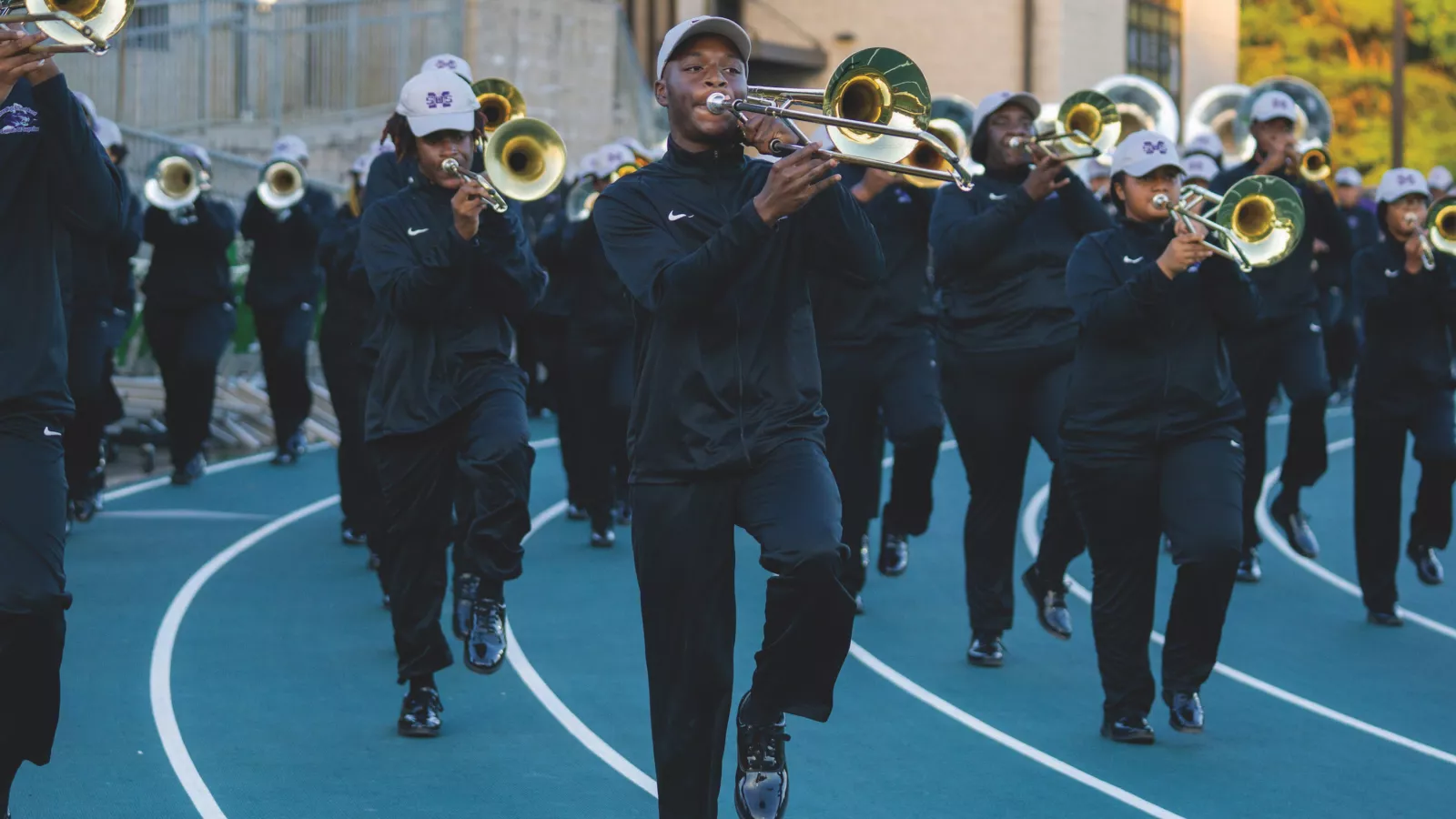Key Takeaways
- After the pandemic all but silenced them, bands are back and better than ever.
- Bands come in all forms but they share one important trait -- they boost school community.
- Band members do better academically and often say the band is their lifeline to school and their motivation to excel.
Bringing Schools Together
At the signal from the drum major, the brass and woodwind players raise their instruments to their lips, heels snapping together in unison. At the next signal, they begin to play, rising to the balls of their feet as they march in place to the cadence of the drumline practicing in the distance.
It’s football season, and the Alexandria City High School Marching Titans are rehearsing for their next halftime performance under the Friday night lights.
“Keep up the fullness of that sound,” shouts Timothy Grant, director of bands at the suburban high school in Alexandria, Va., a few miles from Washington, D.C.
“Really control your momentum and throw that sound!”
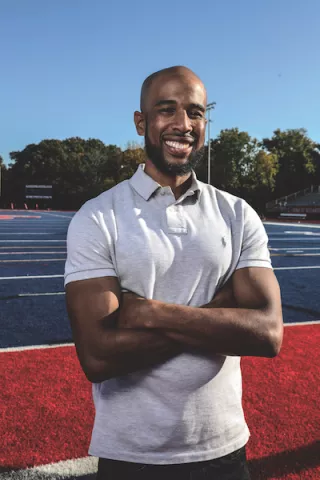
In Alexandria, and across the country, the band is back—and bigger than ever. With heart-thumping percussion and soaring horns, marching bands provide the soundtrack to high school. At games, parades, and other events, their rhythm gets the entire school community up on their feet.
The pandemic all but silenced high school music programs. If they picked up their instruments at all, students played at home on their own or virtually in Zoom sessions. The harmonic feeling and sound that comes with playing alongside bandmates was lost.
“After the pandemic, students were jumping at the opportunity to play as a group again,” Grant says. “We’ve finally restored that sense of community within the band that brings everyone together.”
High school bands might look a little different from school to school and region to region, but they all provide the same critical elements to the educational experience. For students who play, band is often what they enjoy most about school. For some, it’s the lifeline that keeps them from sinking academically or dropping out. For the rest of the student body, band performances boost school spirit and pride.
“Music is the catalyst that brings the whole school population together,” says Oliver Boone, executive director of the High School Band Director’s National Association, who has been a school principal, music teacher, band director, and band parent.
“We live in a sports society, and the athletes usually get all the attention,” he says. “But what’s a game without the fight song? Give me a school that’s missing a band, and that’s a school that’s missing a lot.”
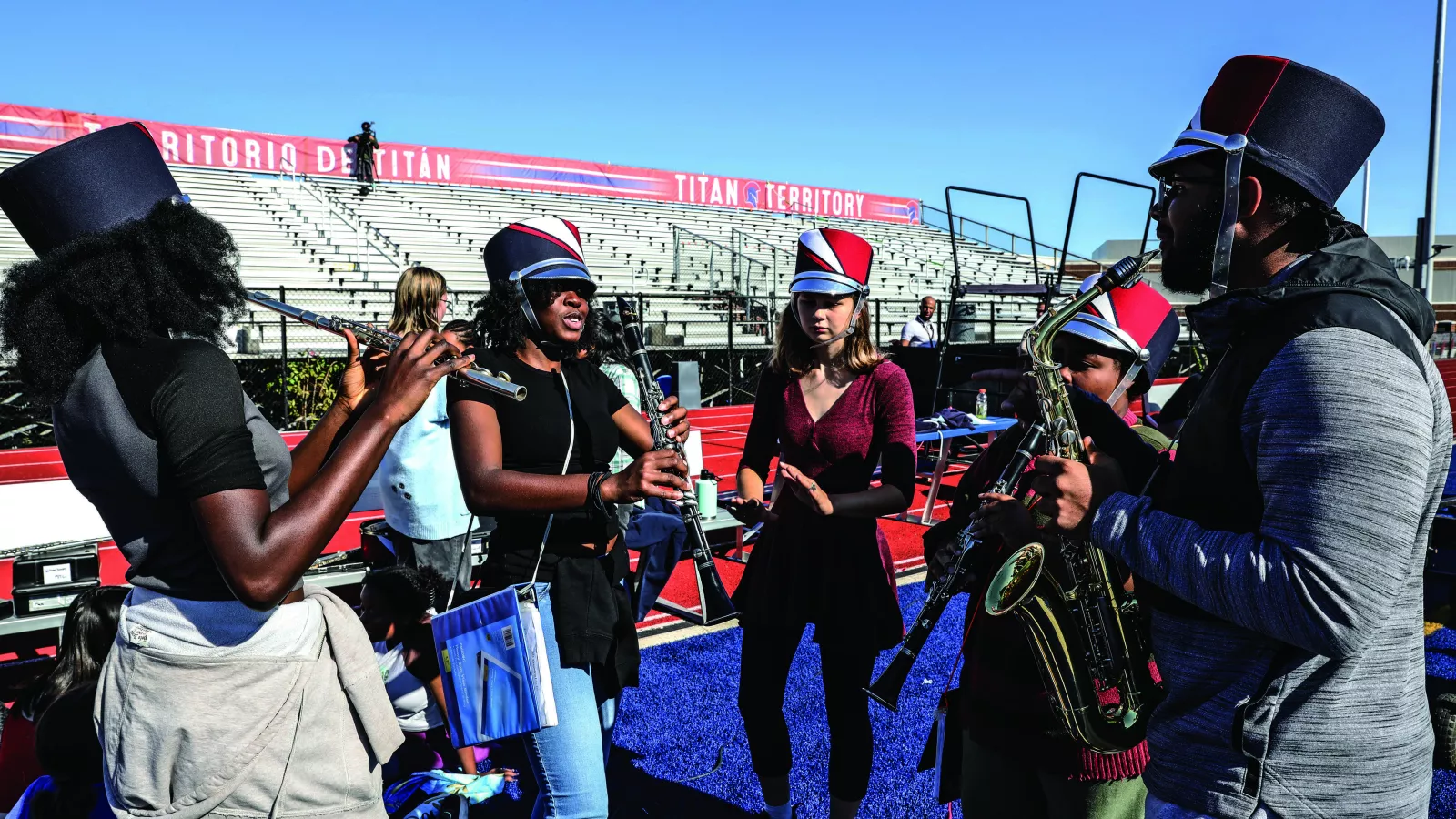
'The Band Saves Students'
Boone says he regularly passes along wisdom he received more than 40 years ago: It’s not a question of whether the band needs a student, but whether a student needs the band.
“The band saves students,” says Boone. “Many wouldn’t have survived school without it.”
Johnny Mims says he’s the perfect example. Mims is the director of the Minor High School Sounds of Superior Marching Band, in Adamsville, Ala. He runs one of the largest high school bands in a state where football and show-stopping marching bands reign supreme.
“My mother was a single mom to four boys. She worked three jobs and did everything on her own,” Mims says. “She pushed us hard, and there was a lot of pressure. At home, I was in survival mode, but in band I was able to be myself and express myself.”
Mims shares the story of a band member, whose father recently became ill. She was thrust into caretaking and working part-time to help with family finances. She knew that band and school were going to help her get to college, but her obligations to her father pulled on her, Mims says.
She found a way to make it work, he recalls. “Because, without band, she wouldn’t have an outlet for her stress.”
Band helps students thrive in a multitude of ways, he adds, such as expressing themselves, dealing with stress and peer pressure, keeping them busy after school and out of trouble, and teaching them valuable lessons about hard work and discipline.
It also provides a a decent workout. Marching across a field while blowing a horn or carrying a drum is no small feat. The biggest benefit, however, may be the academic eligibility requirement of band programs. Members have to keep their grades up across all disciplines to stay in the band.
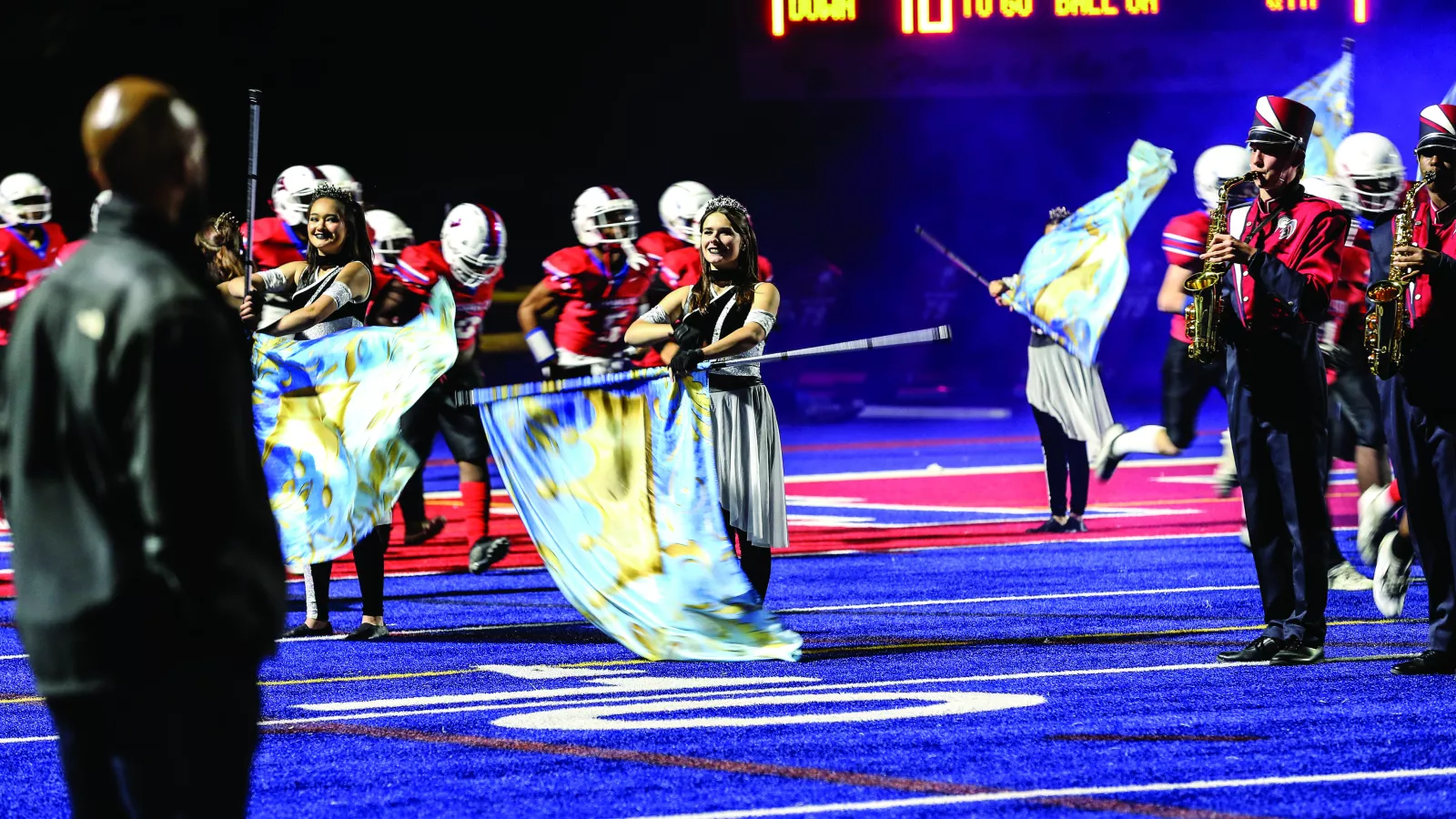
HBCU-Style Steals the Show
Years ago, the school Mims teaches in was predominantly White. As more African American families moved to the area, in the outer suburbs of Birmingham, the school’s demographics began to change. It is now a predominantly Black school.
To reflect the culture, the Sounds of Superior Marching Band is a hybrid of a traditional, military or corps-style marching band and the high-stepping, high-kicking, and high-energy band that’s typical of historically Black colleges and universities (HBCUs). Their routines incorporate dance and a mix of R&B, hip-hop, and other musical genres, in a heart-pounding performance of precision and showmanship that often steals the show, and can be the main attraction at a game.
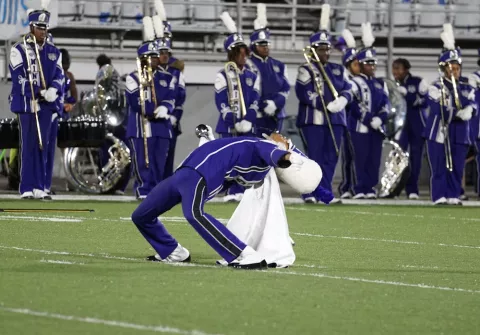
“Attendance at games would be drastically different if the band didn’t perform. A lot of people come just to see us,” Mims says. “Football teams have good and bad seasons, but our marching band consistently gets superiors.” (Superior is the highest rank a marching band can receive in a state competition.)
Corps-style marching bands date back centuries, beginning with early military bands. HBCU-style marching bands also date to early American history.
Black musicians served as fifers, drummers, trumpeters, and piper in Colonial-era militias. In the Civil War, all-Black regiments added brass sections to their bands. By the 19th century, Black touring music groups and Black marching bands were an integral part of American society.
Many members went on to lead budding music programs at Black colleges and universities, where the unique style of dancing and marching bands became the show-stopping powerhouse now known as the HBCU-style that celebrates Black history and culture.
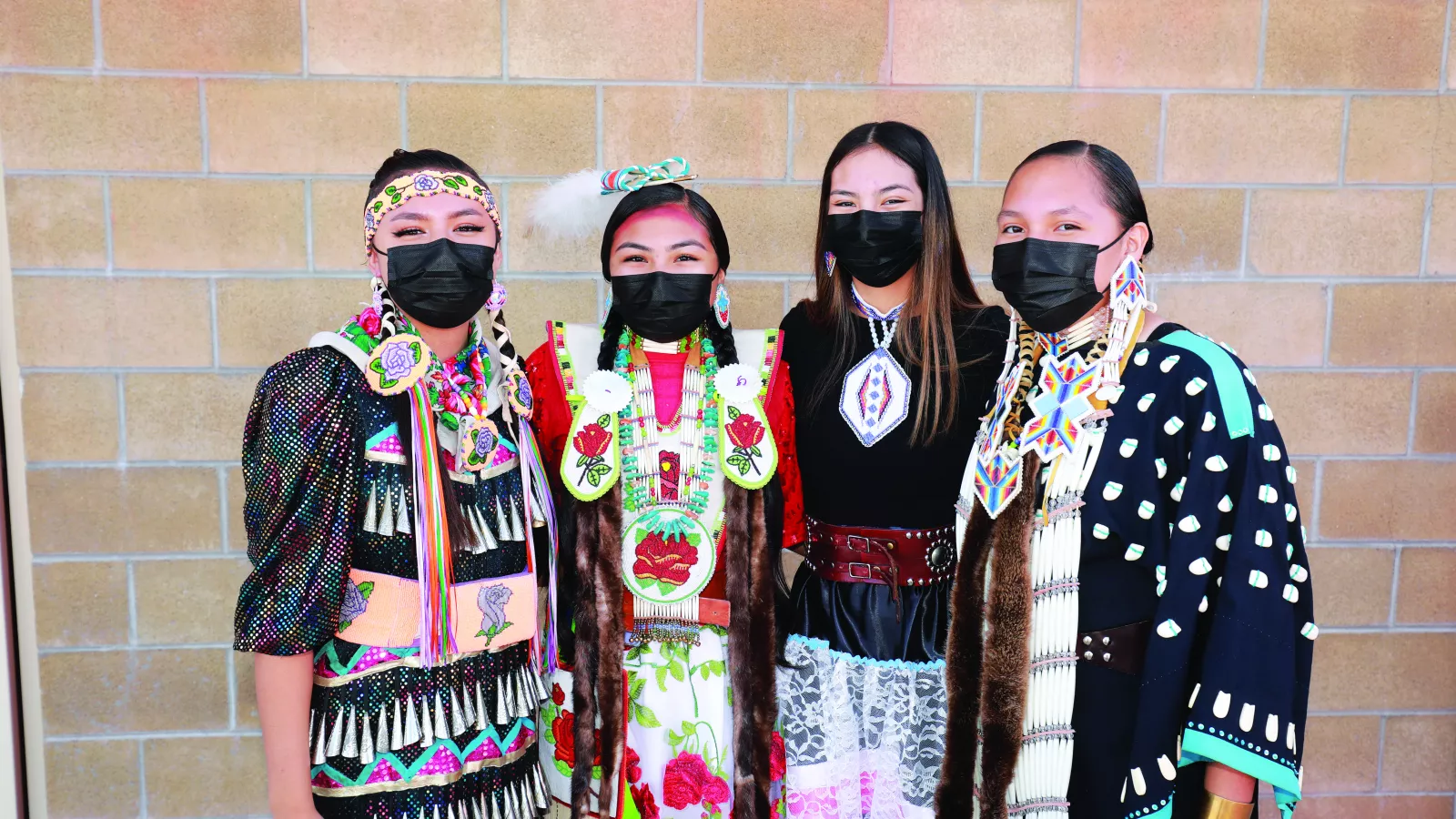
Native Drum Bands Provide Cultural Connection
Different regions of the country have bands that reflect their populations and bring communities together.
The drum circle and Fancy Dancers at Wyoming Indian High School, in Ethete, Wyo., are a major draw for residents of the Wind River Reservation, home to the Eastern Shoshone and the Northern Arapaho tribes.
Sandi Iron Cloud, the Traditional Club sponsor at the school, says their music program celebrates the traditions of their ancestors and helps instill cultural pride among Native students by weaving in traditions of the Native American powwow, a ceremony of singing and dancing.
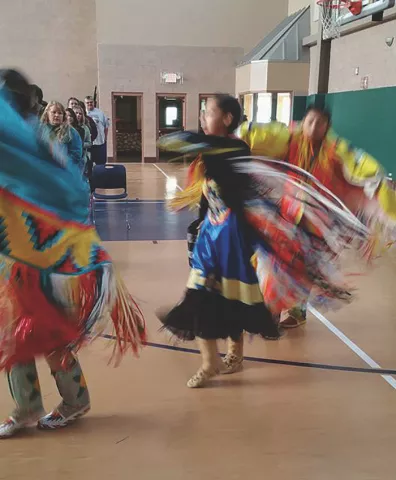
Some members of the drum group play hand drums, others sit in a circle around a large powwow drum, each holding a stick with double-sided tips of hand-sewn leather. Their drum strokes create a steady beat, like the rhythm of a pounding heart. As they drum, they sing the traditional Flag Song and Honoring Song. They play throughout the year at football, basketball, and volleyball games, graduations, parades and other school events.
“It’s like having a powwow in the school system,” says Iron Cloud. “In this way, we honor our ancestors, while the music brings all of us closer. When we sing to honor our elders, or our teachers, or our graduates, it’s very special.”
Dancers perform with the drum group, wearing intricately beaded, hand-sewn regalia with colorful, symbolic designs. Many of the dancers’ regalia are priceless heirlooms passed down through the generations, but each reflects the individuality of the current wearer as well as the ancient traditions.
“It’s important to be able to navigate between two worlds, one that defines you as an American Indian belonging to a tribe, and one that defines you as an individual, knowing it’s all a part of your identity,” Iron Cloud says. “Singing and dancing in the tradition of your ancestors brings those worlds together.”
Parents, grandparents, and all tribe members are invited into the school for performances.
“They bring us a real sense of belonging and joy,” Iron Cloud says. “The students who drum and dance are the reality of the dreams of our parents and grandparents who fought for this school and to keep our traditions alive.”
To remain in the group, they must pass six of seven classes, and they work hard to do so.
“Hard work is also a way to honor their elders,” says Iron Cloud. “It’s a way of life for them.”
Dedication Pays Off
Whether it’s in Wyoming or outside Washington, D.C., participation in high school band is a way of life for all students who participate. It’s a major commitment.
Just ask the Alexandria Marching Titans. They rehearse three nights a week, from 4 p.m. to 6:30 p.m. Then, on Friday nights in fall, there are football games. On Saturdays, they travel to band competitions, leaving in the morning and often returning after dinnertime. There’s also wind ensemble, concert band, and jazz band performances later in the school year. In August, many go to a grueling band camp, which is like a boot camp for student musicians.
But even after all that, there is never enough time, says Alexandria-based band director Timothy Grant.
“We are committed to getting everything accomplished and continually improving our sound. We strive for perfection,” he says. “We know that’s unachievable, but we’re always pushing, pushing, pushing to add more into our shows and get better and better.”
Band demands a lot from its members, but it gives a lot in return, like the unbreakable bonds and strong sense of community. That’s what Grant and his students love most about the program.
“For me, it’s about building those strong relationships with the students,” he says. “Seeing them grow, musically and emotionally, that’s what it’s all about.”
Meet the Band
Nathaniel Burkhead, Flute
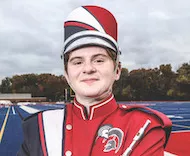
Flute About a year ago we had our first home football game after COVID. I’ll always remember that night. There were probably 1,000 kids in the student section and nobody really left during halftime. I think they were excited to see what we’d been working on after being gone for so long. Since then, there are a lot more people interested in watching the marching band at games. It’s really rewarding, seeing allthose people and being under the lights can be nerve-wracking. But it reminds you of what you’ve been working so hard for.
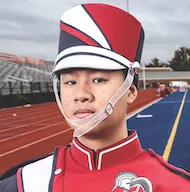
Parker Lo, Drums
I’m really into art, and band and art are similar when it comes to how you learn it. Playing in the band and learning the music serves as a foundation for how I would learn and improve and get better at any skill, but it’s also guided me toward how to get better at art.

Alice Thompson, Color Guard
The most fun part of color guard is performing, both at competitions and football games. Being able to spend time with the guard and doing our hair and makeup for the show is super fun and helps us get excited for whatever performance is coming up. We put in so much work, so it’s really fun to have that effort pay off and to march off the field knowing that you performed well.
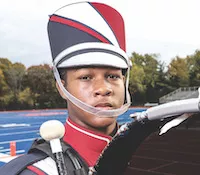
CJ Whitted, Jr., Bass Drum
The football games are great experiences to be a part of, especially hyping everyone up and being able to set the tone. I think the band has a big impact on the school. On the first day of school, most people are still a little tired, but once they get off the bus and hear all the tunes coming from the band, all of a sudden they’re energized.
Photos: Jati Lindsey
Get more from


